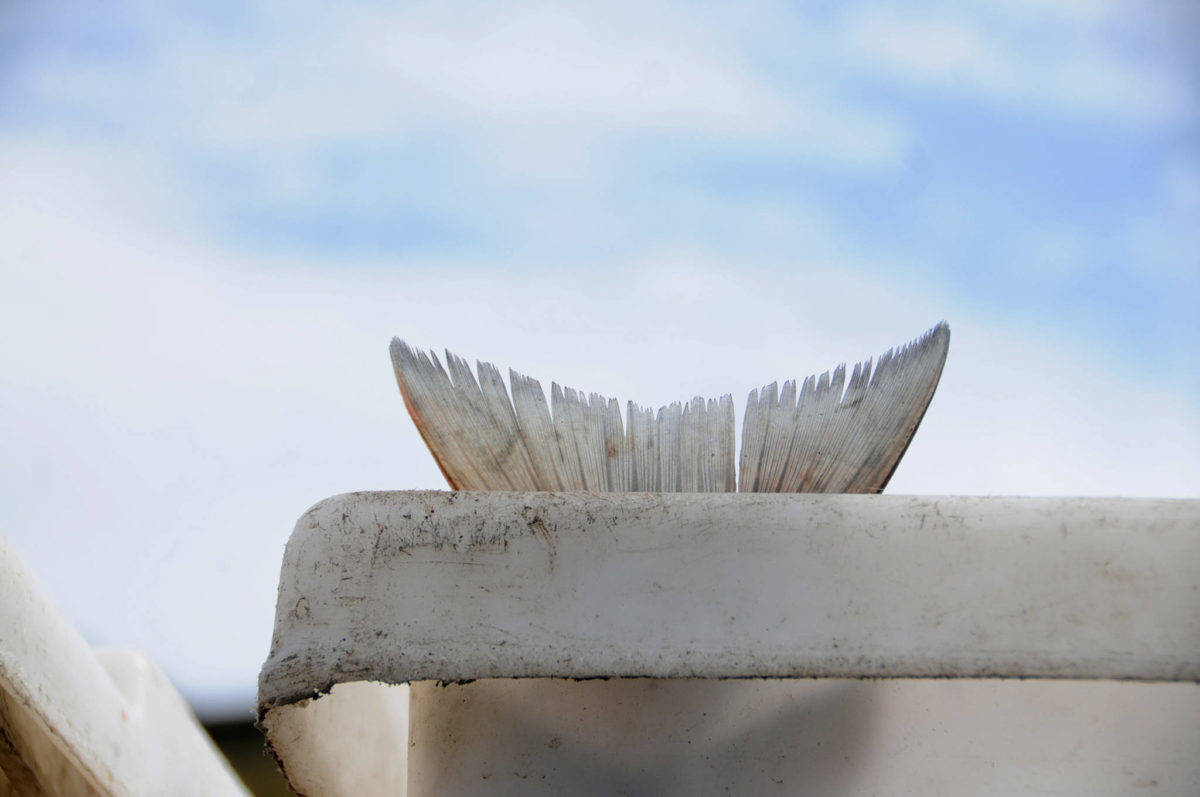As commercial fishing season ramps up in Alaska amid the global novel coronavirus pandemic, the state has provided more clarification on a specific type of fishing.
Last Friday, Alaska Department of Health and Social Services Commissioner Adam Crum said the state was releasing new commercial fishing guidelines specifically for those who fish from shore, like setnetters. Those guidelines were posted on Monday as an appendix to the state health mandate that spells out safety precautions and guidelines for commercial fishing this season.
“This was developed with a lot of input,” Crum said during a press conference last Friday. “We had regional based groups talking with stakeholders, industry, working with communities about the unique needs. And so this is something we’re very happy to get out there.”
The state also updated the acknowledgement form that vessel captains are required to fill out and post on their boats. Crum said it has been updated to be more specific after requests from those in the commercial fishing industry.
The guidelines for shore fishermen state that they are to use the same acknowledgement form as other commercial fishermen, which is on the DHSS website under health mandate 17. Shore fishing site managers must sign that form prior to actively participating in this year’s fishing season.
The site manager must also provide a signed copy of that acknowledgement form to a tender or processor before the tender or processor can accept any fish or make a payment for it. This only applies to the first time a site manager sells fish to a processor — they don’t have to provide a copy of the form with every transaction.
Fish harvesters must screen their workers, according to the guidelines. This includes both verbal and physical screening measures. Any worker who fails the health screening or is displaying viral symptoms will have to be immediately isolated.
At the actual work sites for shore fishermen, the state guidelines stipulate that basic hygiene practices like hand washing should be followed. Workers should be discouraged from sharing personal property with each other, as well as tools and equipment.
Fish harvesters should remain confined to their own campsite or work site, and should practice social distancing with neighboring sites. The guidelines also lay out best practices for food preparation and keeping dining areas clean. One of those is to eliminate buffet or family-style dining and any common serving dishes for the crew members.
“Identify one harvester to handle food and to prepare a plate for each harvester,” the guidelines state. “Do not allow serving utensils to be shared.”
Fish harvesters are to be screened daily for new signs of symptoms associated with COVID-19. If a worker presents with enough symptoms and poses an epidemiological risk, they are to be isolated.
Small communities have expressed great concern that incoming fishermen and seafood processors pose a significant risk to their local populations, with the communities of Bristol Bay being a prime example. The city of Dillingham has suggested shutting the fishery there down if high enough safety standards cannot be met.
To address incoming workers for shore fishing operations, the state guidelines offer two options.
1) Have incoming workers quarantine for 14 days immediately upon arrival in Alaska in a large community like Anchorage or Juneau. The workers should be tested within 48 hours before commencing travel to their final destination.
2) Have workers travel straight to their final destination before starting their 14-day quarantine. That quarantine would have to happen prior to any interaction with other members of the crew or the local community. In this option, the workers would be tested in their final destination if available within 48 hours of their arrival.
Workers do not have to stop and quarantine in Anchorage or a larger community unless they have chosen the first option. If they have chosen the second option, they need to proceed directly to their final destination before quarantining.
The goal of the guidelines was to “give setnetters two broad options to complete their required quarantine,” said Clinton Bennett, communications director for DHSS.
The first option “allows you to go the … store and get your provisions immediately upon arriving to town, because you have completed quarantine and are ready for limited access to the local community,” Bennett wrote in an email.
“We understand this option may incur an added cost of lodging in a larger community during quarantine before starting onward (hub to site) travel,” he wrote.
Workers choosing the second option of quarantining at the final fishing destination would have to have all their food and equipment delivered to them, Bennett said.
“That may be difficult in some areas,” he wrote. “We know that the stores in Kodiak are set up to provide supply delivery service, which many are now using. But that may not be a possibility in some small communities. People utilizing this option may start operations at their site, but may not enter the community and must remain apart from other people at neighboring sites.”
Bennett said setnetters should choose the option that works best for them and their particular site.
To read the full guidelines for setnetters and other commercial fishermen, go to https://covid19.alaska.gov/health-mandates/ and click on “Health Mandate 017.”
Reach Megan Pacer at mpacer@homernews.com.


